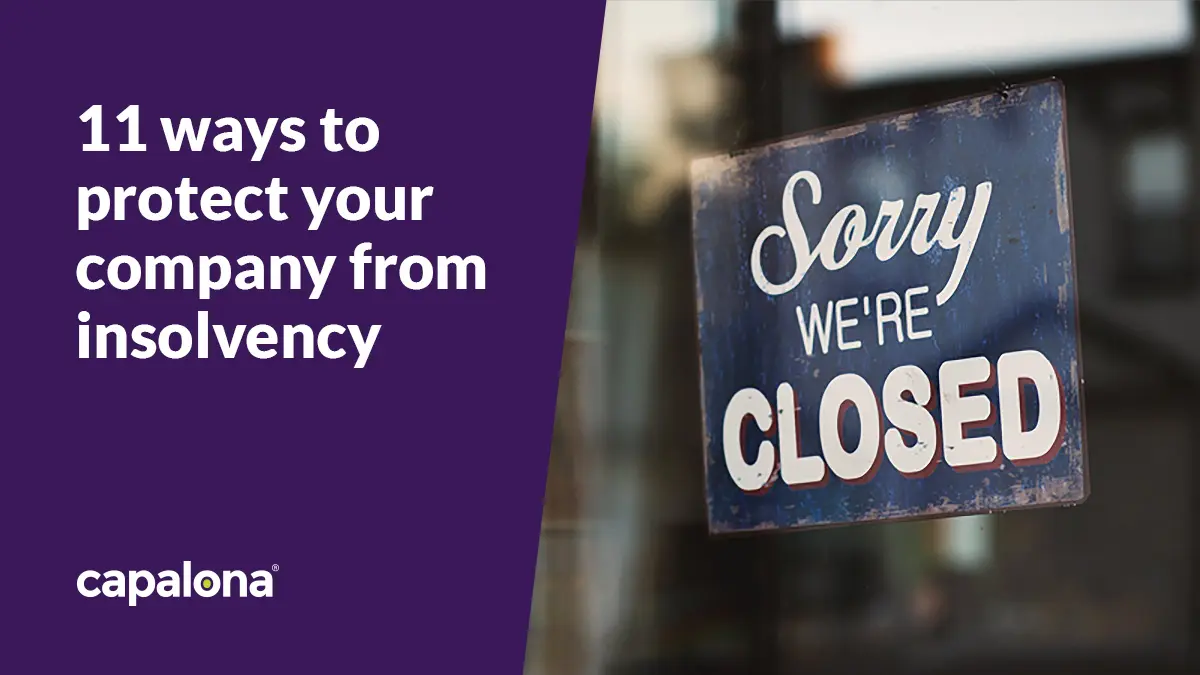The Ultimate Guide To Insolvency Practitioner
The Ultimate Guide To Insolvency Practitioner
Blog Article
The 2-Minute Rule for Insolvency Practitioner
Table of ContentsThe Insolvency Practitioner DiariesThe Only Guide to Insolvency PractitionerAll About Insolvency PractitionerInsolvency Practitioner for DummiesAn Unbiased View of Insolvency Practitioner3 Simple Techniques For Insolvency PractitionerInsolvency Practitioner Can Be Fun For Everyone
Insolvency is when responsibilities are higher than the worth of the business, or when a borrower can not pay the financial obligations they owe. A company can become financially troubled due to a number of situations that cause poor cash money flow. When faced with bankruptcy, a company or individual can call lenders straight and restructure debts to pay them off.
Bankruptcy can lead to insolvency process, in which lawsuit will be taken against the bankrupt person or entity, and assets. Insolvency Practitioner might be liquidated to settle impressive debts. Entrepreneur may speak to creditors directly and restructure debts right into more manageable installations. Lenders are usually open to this method because they wish to be settled and stay clear of losses, even if the repayment gets on a delayed schedule.
The proprietor produces a proposition detailing exactly how the debt may be reorganized utilizing price decreases or other strategies for support. The proposition shows lenders just how the business might create enough cash money flow for successful operations while paying its financial debts. Commonly, a forgiven financial obligation might be considered earnings by the Internal Revenue Service (INTERNAL REVENUE SERVICE).
Insolvency Practitioner - Questions
When an organization has to pay enhanced costs for items and services, the company passes along the cost to the consumer. As opposed to pay the boosted expense, lots of consumers take their business elsewhere so they can pay less for a service or product. Losing clients causes shedding revenue for paying the firm's lenders.
When operations cease, so does the business's revenue. Some companies come to be financially troubled because their goods or services don't advance to fit customers' changing demands.
Insolvency Practitioner Fundamentals Explained
Expenses go beyond incomes and expenses remain overdue. Sorts of bankruptcy include cash-flow bankruptcy and balance-sheet insolvency. Cash-flow insolvency occurs when a company has the possessions to cover their debts but they remain in the incorrect form, such as property as opposed to fluid funds. Balance-sheet insolvency, on the various other hand, indicates an absence of assets in any type of form to cover financial debts.
The IRS states that an individual is financially troubled when the total obligations exceed complete possessions. Insolvency Practitioner. A bankruptcy, on the various other hand, is an actual court order that depicts exactly how a financially troubled person or organization will repay their lenders, or how they will certainly offer their possessions in order to make the settlements
Insolvency Practitioner Things To Know Before You Buy
If that situation expands longer than expected, it can bring about bankruptcy. When a business or individual is insolvent, they can not satisfy their economic responsibilities. Solvency is when you have adequate funds to cover the settlements you owe. A business is considered solvent when additional reading they have more possessions than responsibilities.

Comprehending the variables that can result in bankruptcy, such as overspending, can help you protect against insolvency and its repercussions.
Some Known Details About Insolvency Practitioner
It is popular that supervisors and policemans of firms (and managers of restricted obligation companies) owe fiduciary duties to their organizations and their shareholders (or members). These fiduciary commitments are specified by state laws and, though there are variants from state to state, they typically include a responsibility of loyalty and a responsibility of care.
The responsibility of care needs supervisors and officers to exercise persistance, to make enlightened choices, and to act in excellent confidence to ensure that their activities are in the very best passion of the firm. Past the extent of this conversation, some states enable these obligations to be restricted either by so noting in the business records or abiding with various other requirements.
Facts About Insolvency Practitioner Uncovered

Beware about providing shareholders favoritism at the expense of lenders (e.g., licensing and funding a returns or a supply redemption). Be careful regarding favoritism in between classes of shareholders. Make sensible efforts to discover all the truths before taking a specific training course of activity; directors should truly think that any kind of decisions made are in the most effective passions of the company in its entirety (i.e., have a peek at this website decisions will certainly be reviewed visit homepage in knowledge in light of the result of such activities on the company).
In any type of personal bankruptcy or insolvency proceeding, payments made to certain financial institutions at the cost of other lenders can be clawed back, specifically if there is some connection in between the firm and the financial institution. Consider recommending at an annual shareholder meeting (or any kind of other conference of shareholders) a resolution affirming that all prior company decisions and actions taken by the supervisors and policemans of the firm were absorbed good confidence after an exercise of sensible care.
Not known Facts About Insolvency Practitioner
Completely divulge any type of individual or service partnerships with events on the various other side of purchases including the firm to avoid the look of a problem of interest. In assessing potential fund elevating purchases or a sale of assets of the troubled firm, realize that these deals may be scrutinized later because of any type of subsequent expansion of directors' fiduciary obligations to consist of creditors.
Report this page